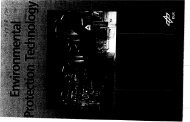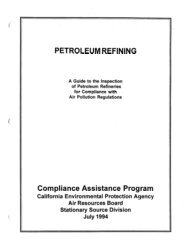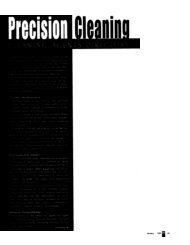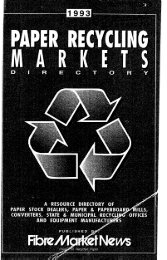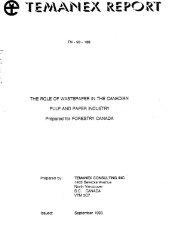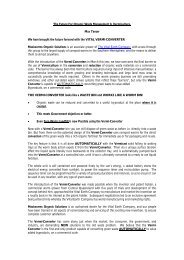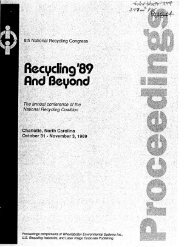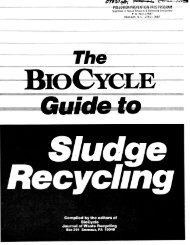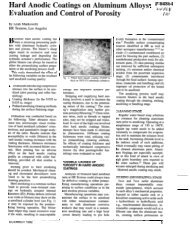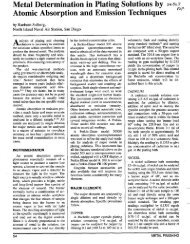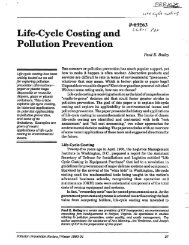Electronic Parts/Guidelines - infoHouse
Electronic Parts/Guidelines - infoHouse
Electronic Parts/Guidelines - infoHouse
Create successful ePaper yourself
Turn your PDF publications into a flip-book with our unique Google optimized e-Paper software.
4.3 Recycling and the Economy<br />
others are based upon fundamentals experts cannot agree upon. Some of these<br />
include:<br />
the length of time required for materials to degrade (litter)<br />
what degradable materials should ultimately yield (e.& oxygen and water),<br />
what conditions must be present for degradation (versus the conditions that<br />
are present in modern-day landfills)<br />
the value of additives designed to speed or enhance material degradation if<br />
the material will instead be incinerated or recycled.<br />
The impact of these proposals is more easily understood by reviewing specific<br />
proposals that regulate or restrict the use of packaging materials or methods.<br />
The demand for recycled materials fluctuates with the economy. In periods of<br />
economic growth. the demand for recycled products is much greater than the<br />
readily available supply. The hOUSing industry, which is very sensitive to eco-<br />
nomic trends, uses a signlficant portion of recycled paper in building compo-<br />
nents including roofing Shingles, fiberboard or wallboard, siding, flooring, tar<br />
paper, and insulation.<br />
Another major purchaser of recycled papers is the foreign market, whose fluctu-<br />
ations are subject to worldwide economic trends. In future years, it is believed<br />
the demand for recycled paper will grow despite recession trends. This is pri-<br />
marily due to the insufficient quantity and poor quality provided by overseas<br />
markets where forest sources are limited.<br />
Dealers diSCOUrage StOCkpiling during a period of oversupply. When the world<br />
economy is in a period of recession, the consumption of waste material declines,<br />
and additional collection is unwarranted. The growing popularity of mandatory<br />
collection of recyclables may also result in the oversupply of waste material.<br />
Germany, with its legislated compulsory recycling, is an excellent example of an<br />
area which has collected an oversupply of recyclable materials<br />
4.4 Outlets for Recycled Materials<br />
Most packaging materials are recyclable. Their recyclability. however, is depen-<br />
dant upon the existence of an outlet for the secondary material. An outlet for<br />
recycled material can be estimated by reviewing costs associated with its:<br />
collection<br />
separation (from heterOgeneOUS mixtures or waste)<br />
cleaning (if required)<br />
reprocessing<br />
transportation (300 miles is generally considered the outer limit)<br />
administrative costs (including sales)<br />
The resultant costs must be competitive with the cost to manufacture similar pro-<br />
ducts from virgin material. This is most easily demonstrated using an example:<br />
The costs involved in reclaiming aluminum from a previously used can may<br />
compare quite favorably to costs associated with manufacturing aluminum from<br />
ore as energy consumption is reduced by about 95%. The differential provides<br />
the material recycler with the opportunity to build additional efficiencies into the<br />
Recycling 25



